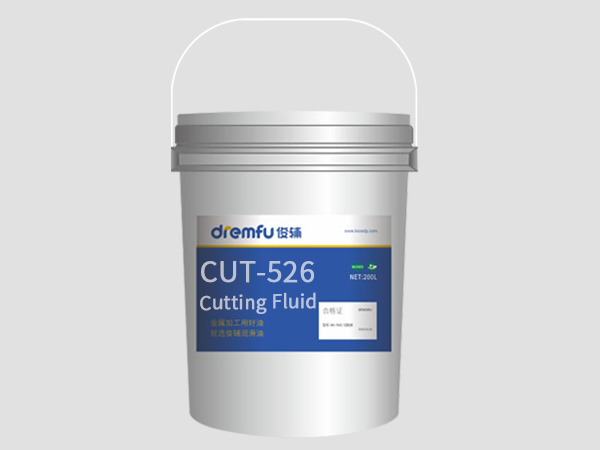2025-04-11 14:30:05
Synthetic Cutting Fluid refers to a type of liquid coolant for metal processing based on synthetic ingredients and distinguished by independent numbers. It is widely used in metal cutting processes such as turning, milling, grinding, and drilling, playing multiple roles of lubrication, cooling, flushing and rust prevention. Unlike traditional mineral oil Cutting Fluids, synthetic Cutting Fluids do not contain mineral oil and are mainly composed of water-soluble chemical components. They are usually clear and transparent, with better stability, environmental protection and cooling performance.

Applications:
Cooling and lubrication of equipment such as CNC lathes and high-speed milling machines.
Processing of various metal materials such as steel, stainless steel, aluminum alloy, and copper.
Precision machining fields such as mold manufacturing, automotive parts, and aerospace equipment.
High-temperature friction processes such as surface grinding, cylindrical grinding, and internal hole drilling.
Centralized cooling system for multi-axis composite machining centers.
In addition, some high-grade synthetic Cutting Fluids can also be used for comprehensive applications such as cleaning, chip removal, and corrosion protection in centralized fluid supply systems.
Material:
Water-based solution: As a basic medium, it has strong thermal conductivity and cooling properties.
Surfactant: Enhance lubrication performance and improve metal surface hydrophilicity.
Antirust additive: Form a protective film to inhibit rust on workpieces and equipment.
Corrosion inhibitor: Prevent processing fluid from corroding metal.
Antibacterial agent: Prevent liquid from deteriorating and stinking during use.
Defoamer: Keep the system clean and stable to avoid bubbles affecting the circulation system.
pH stabilizer: Keep the liquid running stably for a long time in a weak alkaline environment.
These ingredients work together to achieve a clean, environmentally friendly and efficient cutting lubrication environment.
Features:
Mineral oil-free: Completely synthetic structure, strong environmental protection, and reduced environmental burden.
Transparent colorless or light blue: Easy to observe the workpiece surface and cutting status.
High cooling performance: Quickly take away cutting heat to prevent workpiece deformation and burns.
Excellent lubricity: Effectively reduce cutting friction and increase tool life.
Good cleanliness: Less residue, not easy to form sediment, and extend equipment life.
Stable formula: No stratification or deterioration after long-term use.
Low odor and low foam: The operating environment is more friendly and the efficiency of the circulation system is improved.
Easy to dilute: It can be diluted with water in proportion according to process requirements to reduce the cost of use.
Wide adaptability: It is suitable for a variety of metal materials and mechanical equipment.
Advantages:
Stronger cooling capacity: The water-based system has fast heat conduction, significantly reduces the temperature rise of the workpiece, and improves the processing accuracy.
Clean and environmentally friendly: No oil smoke, no pollution to the environment, and more convenient waste liquid treatment.
Strong tool protection ability: Efficient lubrication reduces wear and extends the tool life cycle.
Better operating environment: Low odor, no irritating gas, improve workshop comfort.
Cost control has advantages: It can be recycled, the concentrate dilution ratio is high, and the economic benefits are good.
Easy to maintain: It is not easy to accumulate carbon and oil inside the equipment, and maintenance and cleaning are simple.
Excellent anti-rust effect: It has good anti-corrosion performance for workpieces and machine tools.
Not easy to breed bacteria: Adding antibacterial agents reduces bacterial contamination and odor.
FAQ:
Is Synthetic Cutting Fluid suitable for all metal materials?
No. Although most synthetic cutting fluids are suitable for common steel, stainless steel, aluminum, copper, etc., some high-hardness or easily oxidized materials require special models. The selection should be based on the manufacturer's product number and recommended adaptation table.
Will the use of synthetic cutting fluids corrode the equipment?
Regular products contain corrosion inhibitors and rust-proof ingredients, and generally do not cause corrosion to machine tools, pump bodies or pipelines. However, it is recommended to keep the system sealed, clean and replace the cutting fluid regularly, and avoid using aging fluids for a long time.
Can synthetic cutting fluids be reused?
Yes. It has good stability and cleanliness. Generally, it can be recycled for weeks to months at a suitable concentration, but the pH value, concentration and bacterial content need to be monitored, and the fluid should be replenished or replaced when necessary.
How to judge whether the cutting fluid needs to be replaced?
If the liquid becomes darker, smells, the foam increases, or the lubrication and cooling effect decreases, it may mean that the liquid has deteriorated or contaminated, and it should be partially or completely replaced according to the situation.
Can different types of cutting fluids be mixed?
Mixing is not recommended. Different models have different ingredient ratios. Mixing may cause poor emulsification, performance degradation or precipitation. It is recommended to use products of the same brand and model to maintain stability.